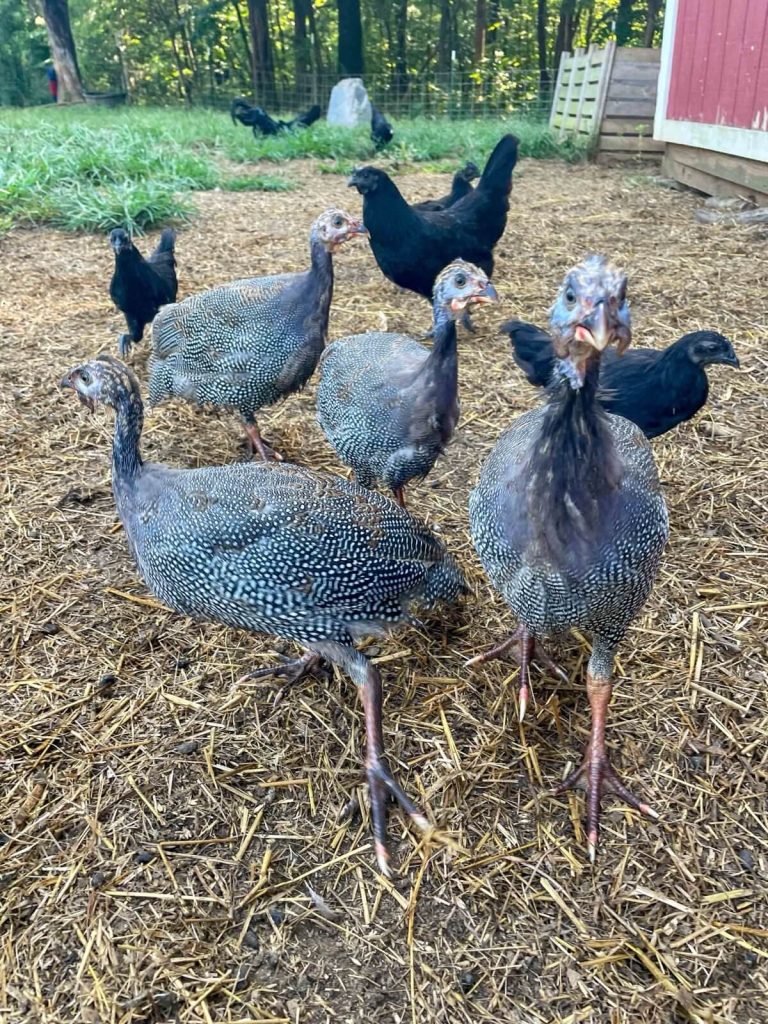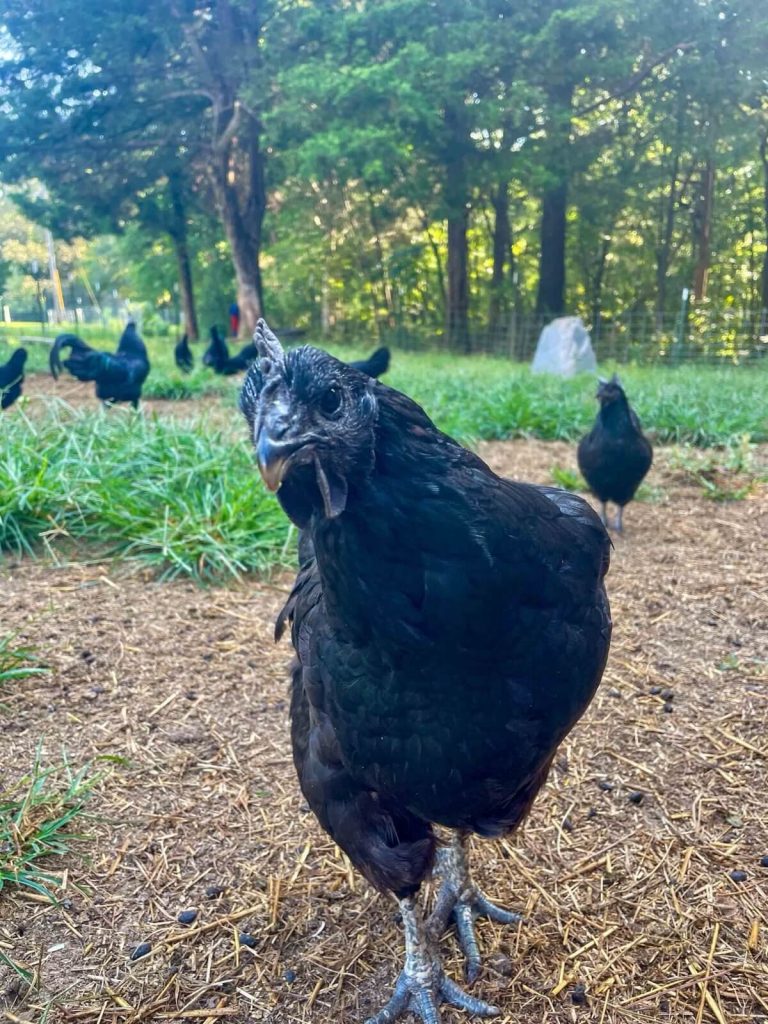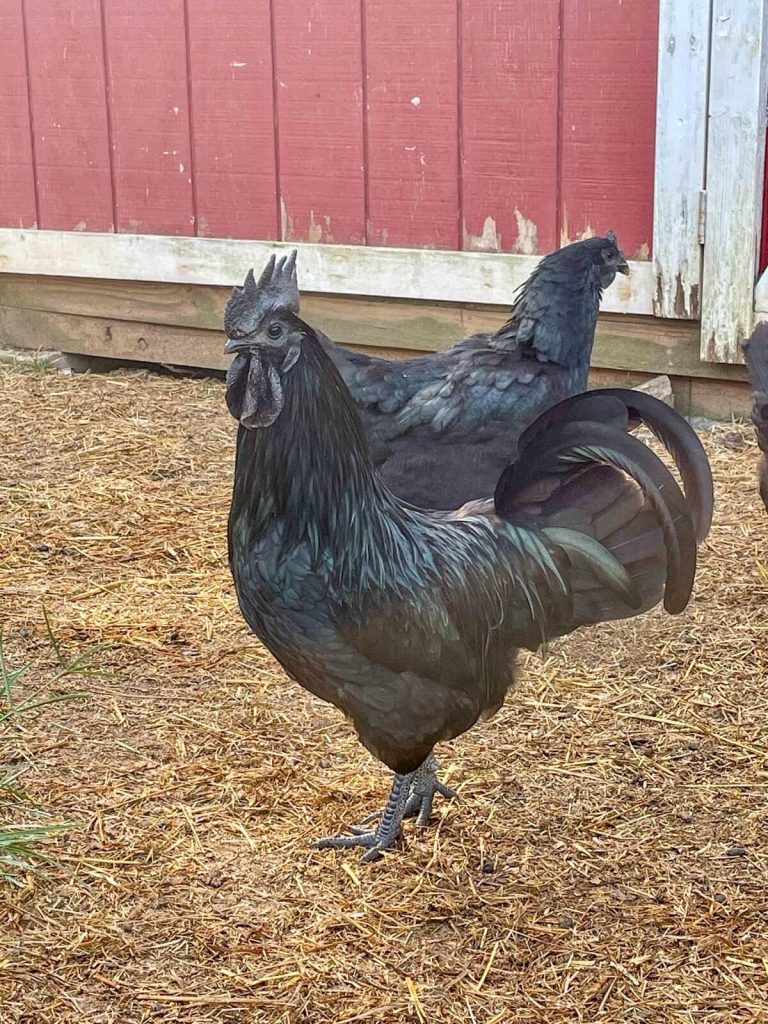How to Introduce New Chickens to an Existing Flock Safely and Successfully
We’ve all been there. We see some ridiculously cute chickens for sale on Facebook and we snatch them up and bring them home. But then what?
Bringing home new chickens is always exciting, but tossing them straight into your existing flock can cause stress, injuries, illness, and can even cause chickens running away.
Whether you’re introducing chickens you’ve purchased from outside your home or adding pullets you incubated and hatched yourself, it’s important to take a slow, strategic approach to flock integration.
In this post, I’ll cover how to introduce new chickens (or any poultry) to your flock safely and successfully. With a little preparation, you can minimize conflict and set your birds up for a smooth transition.

Why Introducing New Chickens Requires a Plan
If you’ve been raising backyard chickens for a while, you know they’re not always the most welcoming hosts. Chickens have a strict pecking order (a social ranking system) that decides who eats first, who roosts where, and who calls the shots.
When you add new chickens, that order always gets shaken up. This can lead to anything from minor squabbles to serious injuries and even death.
If you’re bringing in new chicks or chickens (or any poultry) from another farm or hatchery, illness and disease should also be considered.
No matter if the incoming chickens seem healthy, or they’re from professional hatcheries, or part of the NPIP (National Poultry Improvement Plan) program, they could still carry an illness or disease that isn’t present in your flock.

Tips to Ponder Before Choosing a Strategy to Integrate Your Chicken
For your sanity and your flock’s health and sanity, a thoughtful integration plan is key. Here are some tips to get you thinking about your strategy to combine flocks.
Tip #1: Ask the Seller or Breeder for Tips
Before purchasing your birds, ask the seller or breeder about their temperament, how they introduce new birds to an existing flock, and any personality quirks of the breed you’re buying.
It always helps to hear what you might experience straight from the horse’s mouth. Most sellers will be happy to share what they know with you as they care deeply about their birds. Stay clear of any sellers unwilling or unable to share helpful advice.
Tip #2: Quarantine New Chickens First
Quarantine helps protect your birds from illnesses or parasites that new chickens might carry.
As mentioned before, no matter if the flock you’re purchasing from is healthy, part of the NPIP program, or from professional hatcheries, they may still carry illness or disease not in your flock currently.
What do we do?
We do not purchase live birds from other flocks and instead choose to purchase hatching eggs from NPIP participants. We incubate fertile eggs ourselves to reduce costs, avoid death during shipping, and avoid quarantine needs.
If you choose to purchase live chicks or chickens, you should consider quarantining them until you’re sure they don’t carry a sickness that could hurt your flock.
Once birds leave the seller’s possession they are no longer responsible for them nor for what might happen to your flock if you choose to integrate them immediately.
Quarantine Overview:
- Length: 2–4 weeks is recommended.
- Location: A separate pen that’s far from your existing flock.
- Check for: Sneezing, runny eyes, mites or lice, abnormal droppings, and lethargy.
It’s definitely easier to combine flocks as soon as the new birds arrive, but you risk illness and death. In the long run, the difficult path is the best.
Pro Tip:
During quarantine, handle your main flock first. Wash your hands and shoes before working with your new flock to prevent cross-contamination.
Tip #3: Rearrange the Coop before Full Integration
You can level the playing field between the old flock and the new flock by rearranging the coop. This essentially resets ownership and familiarity in the coop to reduce fighting and aggression.
Because the existing flock knows the coop in and out, it’ll be more likely to fight and defend what it deems to be its domain. Moving nesting boxes, roosts, water, and food can shake things up enough that everything feels new to both the old and new chickens.
You can also provide hiding spots for chickens to escape bullying. But be careful because these spots can, of course, morph into nesting boxes leading to an Easter egg hunt every time you look for eggs.
Birdbrain isn’t a term for no reason. Chickens can be easily fooled.

Tip #4: Add Distractions to Reduce Aggression
You know how sometimes you’ll be driving the same route you’ve driven for 10 years and magically you find yourself at home without remembering how you got there?
Let’s ignore how that’s probably not the safest way to get home and think about how we apply that “flow state” idea to integrating flocks of poultry.
Try redirection with the flock to interrupt their “flow state” that is their normal routine.
Distractions can look like:
- Moving the time of your morning and evening chores
- Putting out more treats like mealworms to encourage distraction from each other
- Hang cabbage (or other veggies) for a playful distraction
- Increase the number of food and water stations so there aren’t traffic jams that lead to fighting
Keeping chickens distracted makes for a happier existence for everyone.
Tip #4: Match Ages and Sizes
While this isn’t always possible, try to match the age and size of the new flock to your existing flock. It’s no surprise that larger, more mature roosters and hens can more seriously injure smaller breeds or younger chickens.
Plus smaller breeds and younger chickens are more easily differentiated so it’s not difficult for the existing flock to pick out the intruders to target.
When not possible, closely monitor the flock for severe bullying and provide hiding spots for the new chickens.
Tip #5: Regarding Roosters
Adding new roosters to a flock with or without roosters can be tricky.
A flock of hens will need to learn to accept a rooster and his dominant behavior. It will take time for the hens to acclimate.
When adding a new rooster to a flock with an existing rooster, make sure that there are enough hens present to support the addition. Keep at least 8-10 hens per rooster to maintain peace in the barnyard. Monitor for severe bullying as the new rooster integrates into the existing flock.
Tip #6: Monitor the Pecking Order
No matter how a flock is integrated, a new pecking order will need to be established. This means that there will be some pecking and fighting that can look alarming from the outside.
Here are some red flags indicating you should intervene:
- One bird is repeatedly targeted and bullied
- Blood or significant feather loss
- A chicken constantly bullied away from food and water
- A bird always hiding and refusing to join the flock
You may need to intervene by quarantining a bird for a period of time and reintroducing it at a later date. Or consider rehoming the bird if your existing flock refuses to accept it.
Strategies for Introducing New Chickens to an Existing Flock
Now that you’re a bit more prepared regarding what it takes to integrate a flock, here are four strategies for actually doing so.
Strategy #1: Utilize a “See But No Touch” Pen and Coop
This method requires a bit of extra work and infrastructure. You’ll want to setup a pen and nighttime shelter right next to where your existing flock lives.
The “see but no touch” method is exactly what it sounds like. Both flocks can see, hear, and smell but not touch each other in their respective pens. This way they can get acclimate to each other without being able to hurt each other.
At the end of 5-7 days, the novelty of the flocks will have worn off and integration will be smoother.
Strategy #2: Introduce in a Neutral, Open Space
Chickens will fight over “owned” space and when space is limited. Overcome this by introducing the new chickens in an area not previously visited by the existing flock.
By integrating in a free-range, open, neutral location, there will be less need to defend an area by the existing flock. This method helps to alleviate their defense response and encourages curious mingling in a low stress, open environment.
Strategy #3: Combine the Flocks Immediately Upon Arrival
I do not recommend this method for multiple reasons.
- Your new chickens may run away
- Your not quarantining the new chickens first
- Your existing flock may severely bully the new chickens
- Your new chickens won’t learn where their coop for safety at night
For example, I sometimes sell mature roosters to other flocks that don’t fit into our breeding program. For one sale, I did not mention that the buyers should first introduce the two roosters to their coop at night so they could learn where to come home.
Unfortunately the two roosters were released into their new flock as soon they made it home. One rooster stuck around and one ran into the woods never to be seen again.
Strategy #4: Move the New Chickens in at Night
This is my preferred method of flock integration and one I’ve used multiple times with great success. And it’s as simple as it sounds.
After the flock has gone to roost for the night, move in the new chickens by placing them on the roosting bars. They’ll all wake up the next morning together more likely to accept the newcomers and go about their lives without much disruption.
The key to this integration is that everyone is sleepy and calm at night so you avoid extreme reactions leading to fighting or bullying.
Your flock will still experience an adjustment to their pecking order, but it should not be severe.
Keep in touch with our twice a month newsletter.
never spammy, sometimes helpful,
always entertaining
How Long Does it Take For Chickens to Get Along?
Don’t expect “Kumbaya” right away or even for a few days as the chickens get to know each other. It can sometimes take a couple of weeks for a new pecking order to be established and for everyone to unruffle their feathers.
Patience is key and slow and steady wins the race. Carefully planning for and executing an integration plan will save you and your flock from stress and heartache.

Frequently Asked Questions (FAQ)
1. How long should I keep new chickens separated from my flock?
Most chicken tenders recommend a quarantine period of 2–4 weeks. This helps ensure the new birds aren’t carrying diseases or parasites before they meet your flock.
2. Can I skip quarantine if I get chickens from a trusted source?
Even if you know and trust the seller, it’s still safest to quarantine. Some illnesses can take weeks to show symptoms, and it’s not worth risking your whole flock’s health.
3. What’s the fastest way to get chickens to accept each other?
There’s no true “fast” method without risk, but using the see-but-no-touch approach and introducing them in a neutral space or at night in the coop can speed up acceptance while reducing fights.
4. Is pecking normal when introducing chickens?
Yes, some pecking is normal as it’s part of establishing the pecking order. However, excessive aggression, blood, or bullying needs intervention.
5. Can I introduce baby chicks to adult hens?
It’s best to wait until chicks are fully feathered and closer in size to your hens before introducing them. We introduce pullets to our flock around 8 weeks old.
6. What should I do if one chicken is being bullied?
Separate the bullied chicken temporarily, provide more hiding spaces, or use multiple feeders and waterers. Sometimes adding distractions like hanging treats can help.
7. How long does it take for chickens to get along?
Most flocks settle within 1–3 weeks, but some may take longer depending on personalities and space. Patience is key.
8. Can I add a rooster with my new hens?
If your flock doesn’t have a rooster, you can add one, but introduce him slowly. If you already have a rooster, adding another may cause serious fights if your flock does not have enough hens to support an additional rooster.
More Resources
In need of a mobile chicken coop or brooder that can easily be built in a day? Look no further than Justin Rhodes’ mobile chicken tractor. We built one and share our thoughts and the cost with you.
Looking to stretch feed costs further while also providing more nutrition to your flock? We love fermenting chicken feed to lower expenses and make our flock happier.
Getting delicious, fresh eggs is the main reason to own chickens. We give back to ours by feeding them their own eggshells. It cuts costs for buying calcium supplementation and cuts waste by providing a use for leftover shells.
Interested in adding a rare, hardy breed to your flock? We raise and love Svarthöna!
Do black chicken breeds like the Svarthöna and Ayam Cemani lay black eggs? We raise Svarthöna and share all you need to know about black chicken eggs.
Final Thoughts
While it may seem easiest to combine new and existing flocks together as soon as they arrive, it can create hardships in the long-run. It’s better for you and your flock to spend some time considering these tips listed above first, choose a strategy for integration, and then follow through.
And remember, a little pecking is all part of the process so don’t be alarmed when you witness that behavior. Your role as a chicken tender is to make sure it doesn’t escalate beyond acceptable pecking order adjustment behavior.
